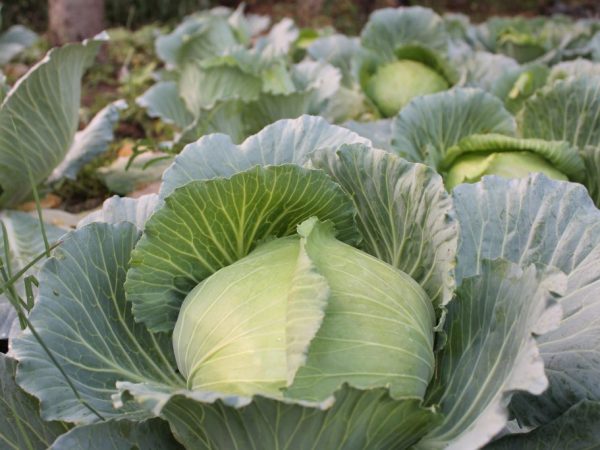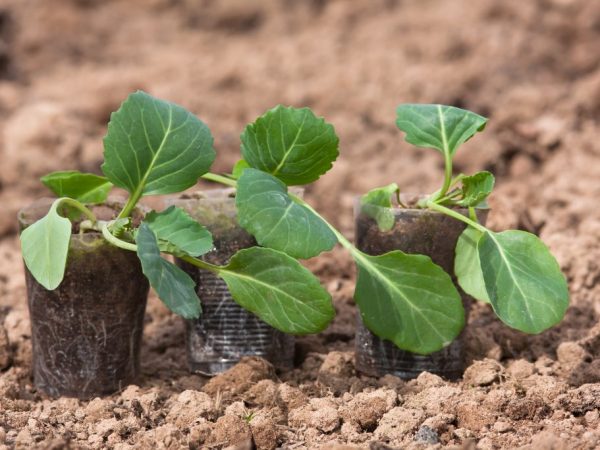Features of Blizzard cabbage
Blizzard white cabbage is a mid-season variety recently bred by breeders. The advantage of the variety is the maximum long-term storage without loss of taste and presentation. Blizzard cabbage is considered a versatile vegetable, has a high yield and is unpretentious in care.

Features of Blizzard cabbage
Description of the variety
Vyuga cabbage was bred by Siberian breeders. According to the description, Blizzard cabbage is intended for industrial and independent cultivation.
| Variety | Ripening terms | Head mass | Number of days of ripening | Head density | Shelf life |
| White-headed | Late maturing | 4 to 5 kg | 135-155 | 4.5 points | up to 8 months |
The leaves are dark green or dark gray, the stalks are small, the leaves are without voids. The shape of the head is round, very dense inside, there is a pronounced waxy coating. The variety is resistant to cracking.
Characteristics of the species
Blizzard cabbage, according to the description of the variety, is suitable for sourdough, pickling, heat treatment. The white-headed variety has a number of nutrients, trace elements, and vitamins in its composition. The most popular are vitamins C and U. They have anti-inflammatory and anti-ulcer effects.
Characteristics of white cabbage Blizzard:
- good taste;
- high productivity;
- disease resistance;
- versatility of cultivation;
- resistance to transport.
Sowing and growing varieties
Blizzard white cabbage is grown through seedlings. Sowing seeds directly into open ground is allowed in southern regions with a warm and mild climate.
How to prepare the seeds:
- select the largest grains;
- disinfect with a pale pink solution of potassium permanganate;
- carry out the hardening procedure with cold and hot water.
Blizzard seeds sprout well. According to the characteristics, sowing begins in April. The depth of the hole is 1-1.5 cm, the distance between the seeds is 3 cm. The germination period will require additional soil fertilization. Watering is moderate; in greenhouse conditions, ventilation is mandatory. After 35-40 days after emergence, the sprouts are transplanted into open ground.
Seedling picking

Plants are transplanted into a large container
Picking is an optional procedure. When 2 leaves appear on the seedlings, the plant is moved into a separate container with a height of more than 12 cm. It must be covered with soil in which the seedlings began to germinate. Pinch the taproot.
Growing seedlings, the soil is additionally fed. If the area of sowing and growth of cabbage is small, plant picking is not required. It is enough to initially sow the seeds in separate containers, 1-2 seeds in a glass.
The specifics of sowing in open ground
Wells are prepared with a depth of 2 cm, at a distance of 30 cm, the gap between the rows is 20 cm. Mineral fertilizer is added to each hole, boiling water with potassium permanganate is poured, the seeds are placed in 2-3 pieces. Each hole is covered with a special film or bottle.
In the presence of small frosts, additional protection is left until the seedlings fully germinate, only occasionally airing is performed. Each hole is thinned out, leaving one strong plant. A pick is required.
Cabbage care
Before planting in open ground, select the illuminated part of the garden. The soil is prepared in the fall: they dig up, remove weeds, add humus or compost.
Blizzard cabbage is a moisture-loving variety. Watering is required 2-3 times a week, in case of drought - 3-4 times. In the rainy period, watering is stopped.
Organic and chemical fertilizers
They begin to fertilize the outer part of the seedlings after the head of the future head of cabbage is tied on the sprout. When choosing organic fertilizers, preference is given to chicken dung, fermented green grass, and cow dung.
Ready-made fertilizers are no less effective. Weak seedlings are fed every 2 weeks. Before the procedure, the site is weeded, weeds are removed. No more than 5 dressings are used per season.
So that the Blizzard cabbage crop is not spoiled by pests, individual means of control are selected. Slugs, fleas, butterflies, worms can harm the crop. The proximity of cabbage with plants such as tobacco, nasturtium and marigold helps to protect the heads of cabbage from damage.
Harvesting and storage
When picking cabbage, a stump up to 10 cm long is left. This variety is intended for long-term storage. It is best to lower the heads into a dry and cool basement.
Proper transportation will prevent the head from splitting or damage. Thanks to this, Blizzard is one of the best mid-season varieties.
Conclusion
Blizzard cabbage is a high-yielding variety with a number of advantages. The blizzard is resistant to light frosts and temperature changes, and is unpretentious to care for. Growing seedlings does not require additional costs.
The head of cabbage leaves have a pleasant dark green hue and a crispy structure. The variety is suitable for any culinary treatment.


